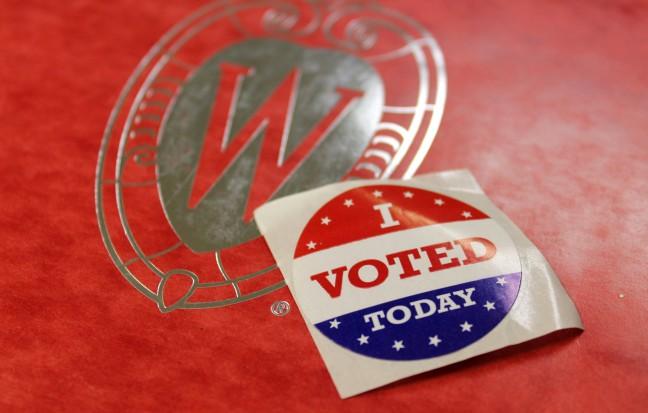Tuesday, April 3, Madison held an election for the offices of Wisconsin Supreme Court Justice and several local offices, as well as a potential constitutional amendment. Since 2000, the average voter turnout for spring primary elections during non-presidential election years has been 21.5 percent. Encouragingly, this year, voter turnout in Madison reached 32.5 percent.
This figure is impressive on its own, but Madison Mayor Paul Soglin released comparative data from 13 wards primarily comprised of University of Wisconsin students showing that voter turnout specifically for students was up this year from 2014, with some wards boasting six times as many voters as past years.
University of Wisconsin professor Barry Burden acknowledged that some of the differences can be attributed to changes in housing patterns, citing greater population density in neighborhoods with new apartment complexes such as The Hub and The James. But the wards comprised of dorm residents, which have had relatively stable populations through the years, saw 245 voters in 2014, and an impressive 738 voters this past week.
Supreme court race extremely significant, voter turnout should reflect that
Clearly, there is more at play than just a shiny new hot tub attracting more residents. Soglin cited gun reform, student loan debt and affordable housing as issues that drew students to the polls, but more powerful than the threat of high rent is the galvanization of a generation of political activism. “There was a sleeping giant and it is awake and that is millennials and college students,” Soglin said. Around the country, young leaders have electrified a political resurgence and young voters are flocking to the polls to continue that impetus.
Take a look at gun control as a national example. Often accompanying tragedies such as the Feb. 14 Parkland, Florida shooting is considerable pushback against politicizing the issue of gun ownership. “Give those affected time to grieve. Don’t capitalize on tragedy to push a political agenda.”
But this line of thinking is abhorrently misguided — the Parkland shooting survivors have made it clear that political action is exactly what is needed at this time. These young leaders created a movement that amassed more than one million people in hundreds of cities across the country for the March 24 March for Our Lives.
Lower voting age encourages civic action, habitual nature of voting
The Washington Post, The New York Times and the Wall Street Journal have each published pieces highlighting the uniquely powerful political voices that millennials have demonstrated lately and this recent election shows that Madison is no exception to this trend. “When they look at their situation and their life and their parents’ lives, these young people are saying, ‘We are not going to see this continue,’” Mayor Soglin said.
As a student body, we must continue this momentum. Madison has long been a bastion for political activism in Wisconsin and it is up to the students to further invigorate this legacy. The high-than-average student voter turnout is encouraging and empowering, but with a voter turnout of 32.5 percent, there is clearly still room to improve.
So keeping voting. Engage in local politics. Talk to your friends and classmates to engage them in these issues. Encourage your roommates to go vote. Make sure your younger siblings are engaged in their local politics. Political activism can’t stop here — UW students can and must lead the way for Madison and for Wisconsin. Let’s show the older generation that we are not ruining this country, but in fact, revolutionizing it for the better.
Cait Gibbons ([email protected]) is a sophomore majoring in math with a certificate in Chinese.














